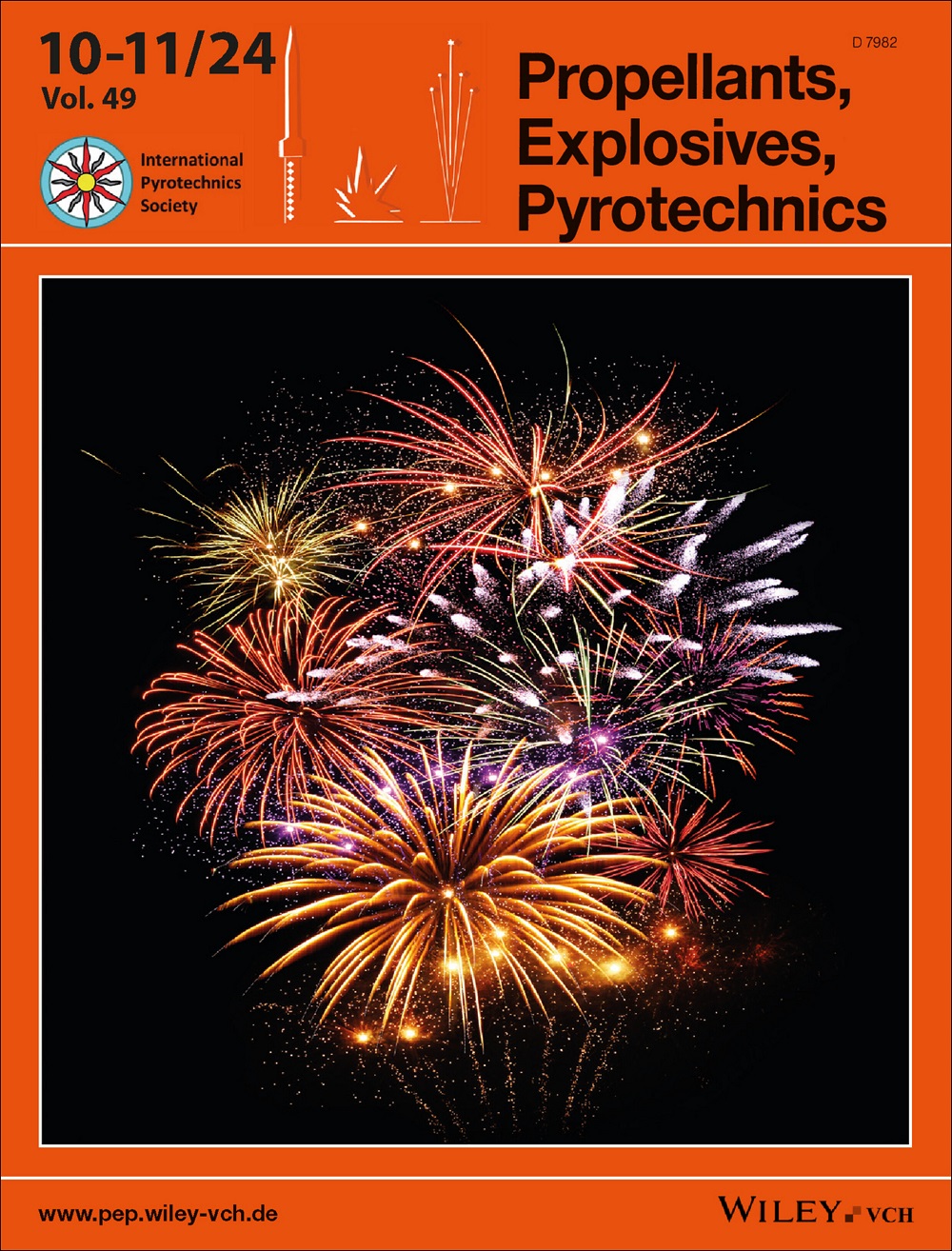Synthesis of HHTPB by partial hydrogenation of HTPB using copper chromite as a catalyst
IF 2
4区 工程技术
Q3 CHEMISTRY, APPLIED
引用次数: 0
Abstract
HTPB (hydroxyl‐terminated polybutadiene) is a well‐established binder in the composite solid propellant owing to its excellent compatibility with ammonium perchlorate (AP) and aluminium (Al) particles in giving rise to optimal ballistic and mechanical properties. Efforts are being made to improve the ballistic properties further, such as specific impulse. One way of increasing the specific impulse is to hydrogenate HTPB, which decreases the molecular mass of the combustion product gases. This paper is a summary of efforts in synthesizing hydrogenated HTPB (HHTPB) using copper chromite (CC) as a catalyst. A novel synthesis methodology is developed for HHTPB using a temperature‐programmed batch reactor with a variable speed stirrer and an instrumentation system to maintain the desired liquid reactant temperature. A process cycle is developed that includes addition sequence and reaction time. The product is analyzed using以铜铬铁矿为催化剂通过 HTPB 部分氢化合成 HHTPB
由于 HTPB(羟基封端聚丁二烯)与高氯酸铵(AP)和铝(Al)颗粒具有良好的兼容性,可产生最佳的弹道和机械性能,因此 HTPB 是复合固体推进剂中一种成熟的粘合剂。目前正在努力进一步提高弹道性能,如比冲。提高比冲的一种方法是对 HTPB 进行氢化,从而降低燃烧产物气体的分子质量。本文总结了使用铬酸铜(CC)作为催化剂合成氢化 HTPB(HHTPB)的工作。针对 HHTPB 开发了一种新的合成方法,该方法使用温度编程间歇式反应器、变速搅拌器和仪器系统来保持所需的液体反应物温度。开发的工艺循环包括添加顺序和反应时间。使用 1H-NMR 和傅立叶变换红外光谱分析产物,分别估算氢化程度和几何异构体。根据氢化度值估算出的表观平衡速率常数在非催化和催化体系中分别为 74 和 2034 L/(mol MPa),这表明催化剂非常有效。吉布斯自由能(ΔG)降低了 4.48 kJ/mol,也证明了这一点。热重分析表明,催化法生产的 HHTPB 的分解温度略高于 HTPB。DSC 曲线表明,HHTPB 的分解焓高于 HTPB。综上所述,本文提出并验证了一种利用铜铬铁矿制备 HHTPB 的新方法。
本文章由计算机程序翻译,如有差异,请以英文原文为准。
求助全文
约1分钟内获得全文
求助全文
来源期刊

Propellants, Explosives, Pyrotechnics
工程技术-工程:化工
CiteScore
4.20
自引率
16.70%
发文量
235
审稿时长
2.7 months
期刊介绍:
Propellants, Explosives, Pyrotechnics (PEP) is an international, peer-reviewed journal containing Full Papers, Short Communications, critical Reviews, as well as details of forthcoming meetings and book reviews concerned with the research, development and production in relation to propellants, explosives, and pyrotechnics for all applications. Being the official journal of the International Pyrotechnics Society, PEP is a vital medium and the state-of-the-art forum for the exchange of science and technology in energetic materials. PEP is published 12 times a year.
PEP is devoted to advancing the science, technology and engineering elements in the storage and manipulation of chemical energy, specifically in propellants, explosives and pyrotechnics. Articles should provide scientific context, articulate impact, and be generally applicable to the energetic materials and wider scientific community. PEP is not a defense journal and does not feature the weaponization of materials and related systems or include information that would aid in the development or utilization of improvised explosive systems, e.g., synthesis routes to terrorist explosives.
 求助内容:
求助内容: 应助结果提醒方式:
应助结果提醒方式:


